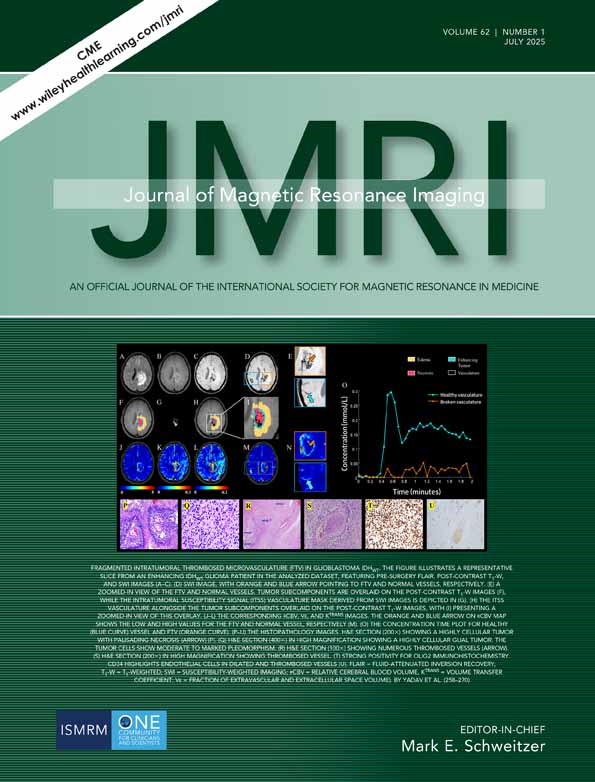Left Ventricular Hemodynamic Forces Changes in Fabry Disease: A Cardiac Magnetic Resonance Study
Jialin Li and Shichu Liang contributed equally to this work.
Abstract
Background
Hemodynamic force (HDF) from cardiac MRI can indicate subclinical myocardial dysfunction, and help identify early cardiac changes in patients with Fabry disease (FD). The hemodynamic change in FD patients remains unclear.
Purpose
To explore HDF changes in FD and the potential of HDF measurements as diagnostic markers indicating early cardiac changes in FD.
Study Type
Single-center, prospective, observational study.
Population
Forty-six FD patients (age: 38 ± 12, females: 45.65%) and 46 sex- and age-matched healthy controls (HCs).
Field Strength/Sequence
3 T, cardiac MRI including steady-state free precession cine imaging (during multiple breath-holds), phase-sensitive inversion recovery sequence for late gadolinium enhancement (LGE) imaging, and motion-corrected modified Look–Locker inversion recovery sequence for T1 mapping.
Assessment
Analysis of strains and HDF were performed on the cine imaging. HDF parameters includes apical-basal force, systolic impulse, systolic peak, systolic-diastolic transition, diastolic deceleration, and atrial thrust. Moreover, FD patients were categorized with left ventricular hypertrophy (LVH+) (the maximal wall thickness >12 mm) or without LVH (LVH−). Mainz Severity Score Index (MSSI) score was calculated to measure the progression of FD.
Statistical Tests
Group comparison tests, logistic regression, and receiver operating characteristic curve (ROC) were performed. A P-value <0.05 was considered statistically significant.
Results
FD patients showed significantly lower native T1 (1161.1 ± 55.4 vs. 1202.8 ± 42.0 msec) and higher systolic impulse (33.8 ± 9.9 vs. 24.8 ± 9.5%). The systolic impulse in HDF analysis increased even in the pre-hypertrophic stage. The increased myocardial global longitudinal strain (r = 0.419) and systolic impulse (r = 0.333) showed positive correlations with a higher MSSI score. The AUC of systolic impulse and global native T1 showed no significant difference (0.764 vs. 0.790, P = 0.784).
Data Conclusion
Increased systolic impulse and systolic peak can be observed in FD patients. Systolic impulse showed potential ability for screening pre-LVH FD patients and correlated with disease severity in FD patients.
Plain Language Summary
This study explored hemodynamic changes in patients with Fabry disease (FD) using hemodynamic force (HDF) analysis based on cardiac MRI. 46 FD patients were included and analysis of cardiac function, native T1, strains, and hemodynamic changes on cardiac MRI images were performed. The results showed that systolic impulse and systolic peak of HDF analysis were increased in FD patients, and systolic impulse may increase even in the pre-hypertrophic stage. Systolic impulse was correlated with disease severity in patients with FD, which may be a potential image-based diagnosis and monitoring marker in FD patients.
Evidence Level
1
Technical Efficacy
Stage 2
Conflict of Interest
The authors declare no conflicts of interest.




